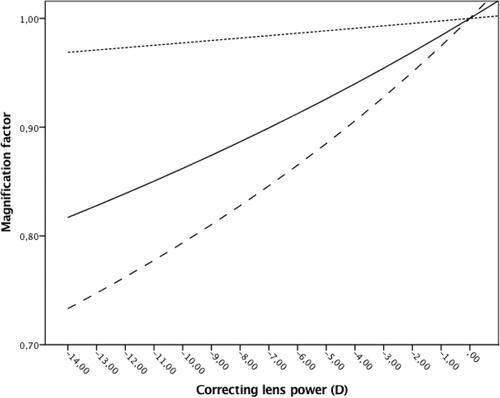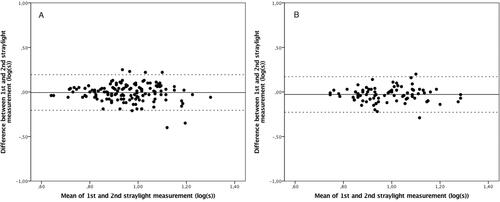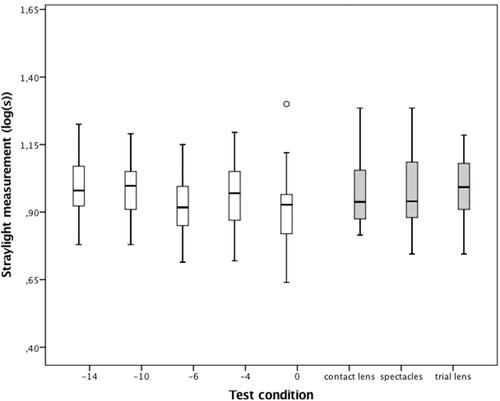Figures & data
Figure 1 Calculated magnification factor as a function of refractive correction power in diopters (D) for thin contact lenses (dashed line), spectacles (solid line) and trial lenses (interrupted line).

Table 1 Characteristics Of The Near-Emmetropic (A) And Myopic Study Group (B)
Table 2 Measured Straylight Values At Different Conditions Of Retinal Image Size For The Near-Emmetropic (A) And Myopic (B) Eyes
Table 3 Associations Of Mean Straylight Values And Possible Predictor Variables Generated By Linear Mixed Models In The Near-Emmetropic Study Group (A) And The Myopic Study Group (B)


